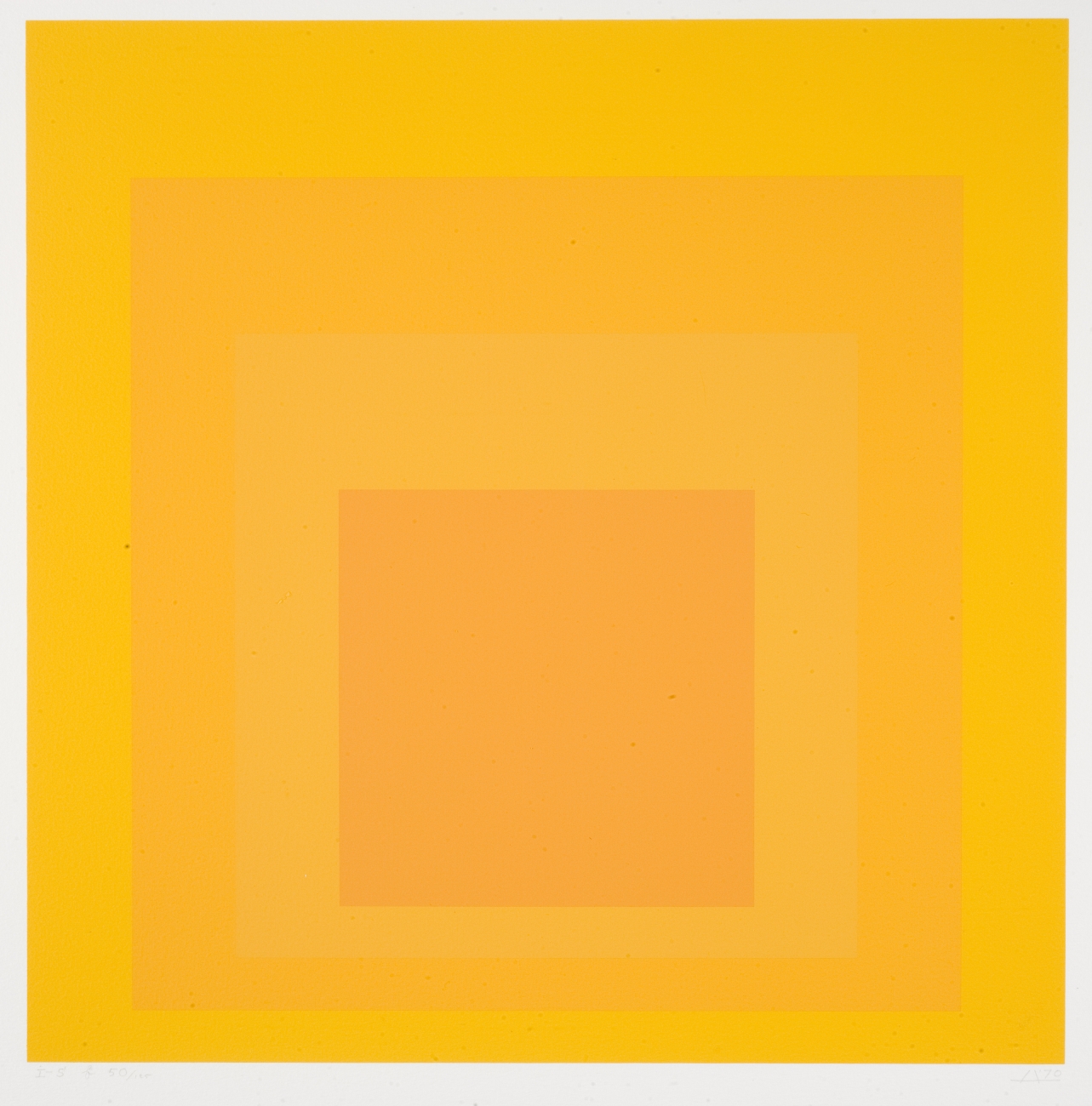Homage to the Square

Josef Albers (Bottrop, Germany 1888–1976 New Haven, Connecticut), Homage to the Square, 1970, Screen print, Museum purchase with funds provided by Wellesley College Friends of Art 1980.107
Josef Albers’ Homage to the Square—a series of color lithographs and screen prints similar to his famous square-themed paintings, made between 1950 and 1976—explores the ways colors interact and reveals that each color is made of many. This concept fascinated Albers, a teacher, writer, painter, printmaker, and color theorist. This yellow Homage to the Square utilizes the silkscreen printing method, which allows for clean and clear layers of color. After studying at the Bauhaus in Germany with his wife Anni, a textile designer, weaver, and printmaker, Josef was the first student asked to join the faculty. The Alberses, like other Bauhaus members, valued the economy of material and medium essential to twentieth-century modernism. Josef and Anni encouraged one another's artistry and lived their lives knowing that art was essential to life’s morality and creativity. After pressure from the Nazis closed the Bauhaus in 1933, the Alberses left Germany for Black Mountain College, North Carolina. Josef later became the chairman of the Department of Design at Yale University School of Art, and in 1971 was the first living artist honored with a solo retrospective at the Metropolitan Museum of Art, New York.
-Breslin Bell, Class of 2018
Museum purchase with funds provided by Wellesley College Friends of Art